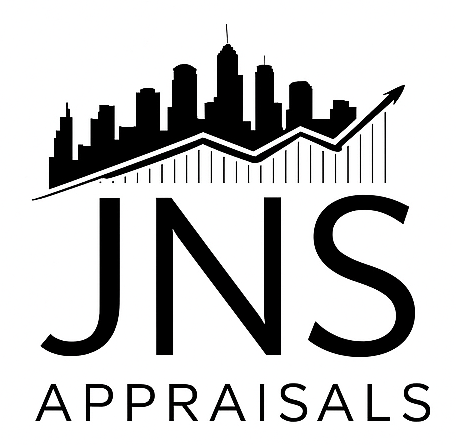Understanding Property Valuation Methods: A Guide for Property Owners and Investors
Property valuation is a critical component of any real estate transaction—whether you're buying, selling, refinancing, or handling estate matters. At its core, a valuation provides an objective estimate of a property's value, derived using standardized, professional appraisal methodologies. Understanding how appraisers determine value can help property owners set realistic expectations, avoid surprises, and make more informed financial decisions.
There are three primary valuation approaches used by real estate appraisers: the Sales Comparison Approach, the Cost Approach, and the Income Approach. Each has its own application, strengths, and limitations depending on the type of property and the purpose of the appraisal.
1. The Sales Comparison Approach
This is the most widely used valuation method for residential real estate, and for good reason—it mirrors how most people buy and sell homes in the open market.
The Sales Comparison Approach involves analyzing recent sales of comparable properties—often referred to as “comps”—to estimate the market value of the subject property. Appraisers seek out properties that are similar in terms of location, size, age, condition, lot characteristics, and features. Once the comps are selected, the appraiser makes market-based adjustments to account for material differences. For example:
If a comparable property has an extra bathroom, the appraiser will make a negative adjustment for that comparable.
If the subject property has a finished basement and the comp does not, an upward adjustment is applied.
The reliability of this approach hinges on the availability and quality of recent comparable sales. In a stable or active market, this method is highly effective and typically the most persuasive indicator of value.
However, in slower markets or unique neighborhoods with few recent sales, this approach may require broader geographic or temporal search criteria, which can increase uncertainty.
2. The Cost Approach
The Cost Approach determines value based on what it would cost to rebuild the property from scratch, minus any depreciation, plus the value of the land.
This method is particularly useful for:
New construction
Special-use properties (e.g., churches, schools, government buildings)
Properties with limited market activity where comps are scarce
The calculation follows this general formula:
Value = (Cost to Replace or Reproduce Improvements – Depreciation) + Land Value
There are several forms of depreciation that must be accounted for:
Physical depreciation: wear and tear over time
Functional obsolescence: outdated design or features that reduce utility
External obsolescence: factors outside the property that negatively affect value (e.g., proximity to a landfill or declining neighborhood conditions)
While the Cost Approach doesn’t reflect market sentiment as directly as the Sales Comparison Approach, it provides a strong intrinsic value benchmark, especially when the property is new or unique.
Keep in mind: land value is derived from market data, and replacement cost estimates typically rely on cost services like Marshall & Swift or local builder estimates.
3. The Income Approach
Used primarily for income-producing properties such as multifamily buildings, office spaces, shopping centers, and industrial facilities, the Income Approach determines value based on a property’s ability to generate cash flow.
There are two main techniques within this approach:
Direct Capitalization: Divides the net operating income (NOI) by a market-derived capitalization rate (cap rate) to estimate value.
Value = NOI ÷ Cap Rate
Discounted Cash Flow (DCF): Projects income and expenses over a defined holding period (typically 5–10 years), then discounts those future cash flows to present value using a discount rate.
The appraiser must analyze:
Rental income (actual and market)
Vacancy and collection loss
Operating expenses (utilities, taxes, insurance, maintenance)
Reserves for replacements
The Income Approach is vital for investors, as it directly ties property value to investment performance. A property with strong, stable income and low expenses will command a higher valuation. Conversely, poorly managed or underperforming assets will reflect lower values due to diminished income potential.
Which Approach is Used—and When?
Not all valuation methods apply to every property. Appraisers select the most appropriate approach (or a combination) based on:
The property type (residential, commercial, industrial)
The purpose of the appraisal (financing, tax appeal, estate planning)
Available market data
For instance:
A suburban single-family home might rely almost entirely on the Sales Comparison Approach
A brand-new custom home may benefit from the Cost Approach
A mixed-use commercial building would likely lean on the Income Approach, supplemented by the other two methods for context
An experienced appraiser knows how to weigh each approach properly to deliver a credible, well-supported valuation.
Final Thoughts
Understanding these valuation methods empowers property owners, buyers, and investors to navigate the real estate landscape with confidence. By grasping how value is determined—whether through comparisons to similar sales, cost to rebuild, or income potential—you’ll be better prepared to communicate with appraisers, negotiate with buyers or lenders, and make strategic decisions for your property portfolio.
Whether you're considering a refinance, preparing for a sale, or simply want to know what your property is worth, a professional appraisal grounded in these valuation principles is one of the most reliable tools at your disposal.
